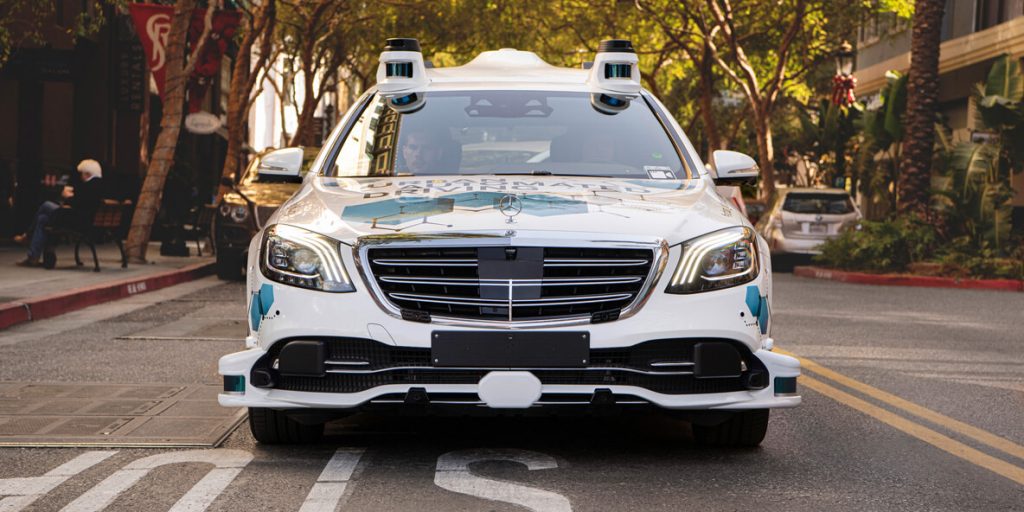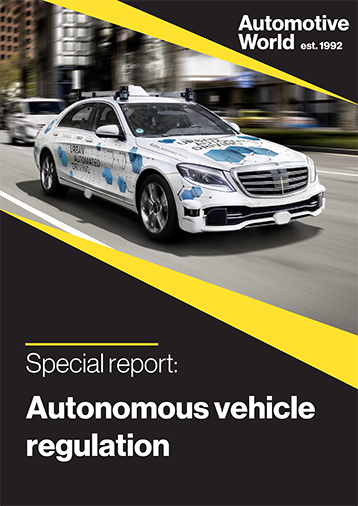The National Highway Traffic Safety Administration (NHTSA) is taking on a collaborative role with autonomous vehicle (AV) developers and other key stakeholders to move the needle forward on the safe development and deployment of AV technologies while instilling public confidence in these new technologies.
For years, NHTSA has been consistent in its support of AV development, and the potential safety benefits of AV and automated driving system (ADS) technologies. NHTSA expects AVs to increase safety significantly by reducing the likelihood of human error when driving, which today accounts for the overwhelming majority of crashes on US roadways.

AV and ADS developers should take advantage of NHTSA’s stance to inform their development efforts and strategies. NHTSA continues to prioritise AV development in its regulatory efforts, recently announcing its plans to establish and require rigorous testing standards for AVs; establish a national incident database for crashes involving AVs; issue regulatory actions that allow for updates to current Federal Motor Vehicle Safety Standards (FMVSS) to streamline NHTSA’s regulations, outlining the administrative processes for petitioning the agency for exemptions, and reconsiderations; and to create a safe, predictable environment for AV evolution generally. By its own declaration, NHTSA has worked strategically to balance regulatory barriers to technology innovation, and the integration of AVs, while continuing to focus on safety.
Most recently, NHTSA has focused on advancing AV technology by requiring that AV developers report crashes that occurred when such technology was in use, and critically analysing AV technologies to understand how they work generally. This includes any pitfalls or safety measures that should be implemented to enhance the technologies.
In June, NHTSA issued an order requiring vehicle and equipment (including software) manufacturers to report crashes within one day of learning of crashes involving vehicles equipped with SAE Level 2 advanced driver assistance systems (ADAS) or SAE Levels 3-5 ADS, where the Level 2 ADAS or Level 3-5 ADS system was engaged during or immediately before the crash. An updated report is due ten days after learning of the crash, and every month companies must report all other crashes involving an ADS-equipped vehicle that involve an injury or property damage. NHTSA did not previously collect this crash data in a systematic fashion.
To continue developing consumer confidence in the new technology, AV developers should use the data, research, guidance, and requirements posed by agencies like NHTSA to identify best practices for their own development efforts
This new effort could help impress upon the public that the federal government is closely overseeing the safety of AVs. Access to this data may also show whether there are common patterns in driverless vehicle crashes or systematic problems in operation. This requirement represents another shift in policy from NHTSA’s ongoing voluntary collection of AV data through its Automated Vehicle Transparency and Engagement for Safe Testing (AV TEST) initiative. This order demonstrates a shift to more proactive US regulatory oversight of existing ADS- and ADAS-equipped vehicles on public roads in the US. In the past, NHTSA has received criticism for its less active approach in the space.
Additionally, in August of this year, NHTSA launched a formal investigation of Tesla’s driver-assistance system, namely the automaker’s Autopilot system and its efforts to monitor, assist, and enforce the driver’s engagement while Autopilot is in use. The investigation will also look into the so-called ‘operational design domain,’ a term which refers to the range of places and situations in which the Autopilot can be turned on. It is expected that investigators will focus on how Autopilot ensures that drivers are paying attention to the road and are prepared to retake control of their cars in case the system fails to recognise and brake appropriately.
Although this investigation centres on Tesla, it has broader implications for all AV developers. NHTSA has the authority to force all automakers to add safety devices and features to their cars, and to recall non-compliant or safety-defective vehicles and equipment. This investigation is also likely to enhance NHTSA’s understanding of AV technology in general, namely, how it works and how it can be made safer.
Most recently, NHTSA has focused on advancing AV technology by requiring that AV developers report crashes that occurred when such technology was in use, and critically analysing AV technologies to understand how they work generally
There is much that can be gleaned from NHTSA’s actions, and what AV developers can and should be doing in this space. Just as NHTSA will be able to glean trends and identify areas of concern from the data, such as safety issues and driver distraction, manufacturers will also be able to study such trends and implement and adapt their technology accordingly. AV developers should look to data collected on AV crashes to inform their strategies for developing warnings and owner manuals. As one example, semi-autonomous AV owners’ manuals should instruct drivers to keep their hands on the steering wheel given NHTSA’s present investigation. AV developers should also create policies, plans, and internal and external reporting processes for reporting crashes that fit the requirements outlined above.
To continue developing consumer confidence in the new technology, AV developers should use the data, research, guidance, and requirements posed by agencies like NHTSA to identify best practices for their own development efforts. Manufacturers will benefit greatly from NHTSA’s deep knowledge, engagement, and interest in AV development as they continue to adapt their technologies.
Rebecca Baden Chaney is Partner and Rukiya Mohamed is Associate at Crowell & Moring LLP




